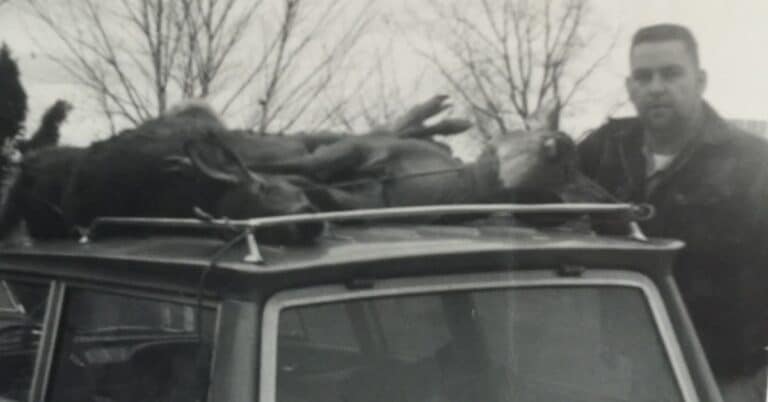Is Buck Fever a Real Thing?
A Tough Lesson on a Michigan Deer Youth Hunt
Autumn is my favorite season and each year I look forward to new hunting adventures with my sons. My wife jokes that I have two seasons: Hunting and thinking about hunting. In Michigan, the Youth Hunt takes place in September and children can participate until the age of 16. This year would be my youngest son’s final youth hunt and it had a lot of meaning to me. Little did I know that it would unfold into a tale of youthful enthusiasm, mistakes, and invaluable lessons for both of us.
The Decision-Making Process
This year, I gave Lincoln the reins to choose his weapon for our annual deer hunt. I have four different guns he could choose from. His transition from a shotgun to a .300 Win Mag marked a significant step forward, and I was all for it. After some range practice, Lincoln expressed the desire to sit in his own hunting blind, a few yards away from mine, seeking independence and a chance to take a shot at a distant target.
At 16, he was ready for the challenge. Little did we know, this decision would lead to a series of events that would become a story worth sharing.
Buck Fever Strikes
The youth hunt day arrived, and Lincoln took his position in a wooded area, surrounded by natural food sources. The plan was clear – if he spotted a deer, he’d send me a message, and we’d coordinate the next move. Meanwhile, I held my position in an open field, a food plot designed to attract deer later in the season.
Two bucks graced my presence, and I signaled Lincoln to join me quietly. The stage was set for a successful hunt, or so I thought.
Lesson 1: Patience is Key
Hours passed, and the deer returned as predicted. Lincoln, positioned behind a dirt berm, had a clear shot at about 80 yards. However, patience became the first lesson of the day. The deer, standing broadside, offered a perfect opportunity, yet Lincoln hesitated.
As his guide and father, frustration crept in. The deer lingered, seemingly unbothered, but Lincoln struggled to make a move. It was a test of patience, a virtue crucial in the world of hunting.
Lesson 2: Overcoming the Mental Hurdle
Watching Lincoln through the scope, I could sense his hesitation. He seemed frozen, unsure of when to make his move. It became evident that the mental aspect of hunting was a challenge for him.
Encouraging words were met with a delayed response. Eventually, he got into position, but by then, the deer had sensed something was amiss.
Lesson 3: Attention to Detail Matters
As Lincoln aimed through the scope, the culmination of excitement and nervousness surfaced in an unexpected way. The deer, once again, calmly trotted away. The missed opportunity left us both contemplating what went wrong.
It wasn’t until we packed up to leave that Lincoln revealed the crucial detail – he forgot to take the safety off. In the world of hunting, where every second counts, such oversights can make all the difference. In my mind, I was thinking he had succumb to Buck Fever. But I wanted to be careful with how I spoke to him about it.
Reflecting on the Hunt
In the quiet confines of the car, I chose to let the silence linger. As a father, disappointment swirled within me, but I understood the importance of allowing Lincoln to process the experience himself.
The revelation came as we drove home. Lincoln shared his perspective, admitting that he struggled to get into position and, to his surprise, the gun didn’t fire. That’s when the realization struck – the safety was still on.
Lesson 4: Open Communication when Buck Fever Strikes
In the aftermath, it became crucial to address the buck fever situation delicately. Instead of pointing out mistakes, I asked Lincoln to share his side of the story. Open communication allowed him to express his feelings and gave me insights into his perspective.
7 Tips to Avoid Buck Fever
1. Visualization Techniques:
Practice mentally rehearsing the hunting scenario to stay calm.
2. Breathing Exercises:
Focus on deep, controlled breaths to reduce anxiety.
3. Preparation and Equipment Familiarity:
Be familiar with hunting equipment to avoid mistakes.
4. Realistic Expectations:
Set realistic goals and focus on the overall experience.
5. Mentorship and Guidance:
Have an experienced mentor or guide for reassurance.
6. Mindfulness and Focus:
Stay present and focused during the hunt.
7. Learn from Mistakes:
View mistakes as opportunities for personal growth.
Embrace the Good and the Bad
As hunters, we often romanticize the idea of a successful shot and a trophy buck. However, this adventure with Lincoln reminded me that hunting is about much more than the kill. It’s about the lessons learned, the bond formed, and the growth experienced.
Mistakes are an inevitable part of any journey, especially for young hunters like Lincoln. Each missed opportunity is a stepping stone toward becoming a seasoned, skilled hunter. And as a father, guide, and mentor, it’s my role to nurture that growth.
So, to all the beginners, youth hunters, and aspiring deer hunters out there, remember this – the journey is filled with highs and lows, mistakes and victories. Embrace it all, for it’s in those moments that you truly become a hunter. You can learn more about the Michigan Youth Hunt on the DNR web site.







